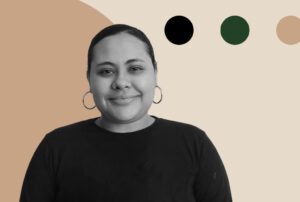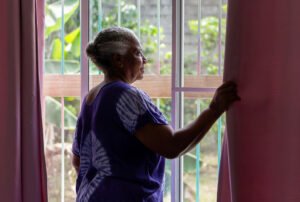
Within the US social, political, and cultural landscape, the Asian American, Native Hawaiian, and Pacific Islander (AANHPI) community is often rendered invisible. However, this community includes a diverse array of cultures in more than 20 countries in East and Southeast Asia, eight major Hawaiian Islands, and approximately 30,000 Pacific Islands spanning the regions of Polynesia, Melanesia, and Micronesia.
The neglect this population faces in the United States is not by accident. Instead, it is the result of measures to intentionally destroy AANHPI cultures and to exclude Asians from entering the country and from obtaining citizenship. American colonialism and imperialism has led to the erosion of Native Hawaiian and Pacific Islanders’ cultural identities while simultaneously causing economic and social marginalization that is inextricably tied to these group’s limited access to education and employment opportunities in the present day. Additionally, laws such as the Chinese Exclusion Act of 1882 and policies like the internment of Japanese Americans during World War II reflect America’s history of marginalization and othering toward Asian populations. These discriminatory stances have culminated in a concerning lack of policies to support the health and wellbeing of the AANHPI community.
These discriminatory stances have culminated in a concerning lack of policies to support the health and wellbeing of the AANHPI community.
The AANHPI community also has significant impediments to building the political power necessary to advocate for change. Though the population is growing, the AANHPI community is among the smallest racial/ethnic groups in the United States and has, arguably, among the most intragroup diversity. This can also create barriers to sociopolitical action—and pervasive stereotypes such as the “model minority” myth often stymie efforts to address this community’s unique challenges.
The AANHPI community often suffers from a dearth of research, and, subsequently, a lack of health initiatives that specifically target this diverse population.
The AANHPI Community’s Health Needs
The AANHPI community faces significant barriers to accessing healthcare. According to the National Institute on Minority Health and Health Disparities, the group disproportionally suffers from several severe and chronic health conditions. Asian Americans have the highest incidence and mortality rates of liver and stomach cancers, mostly because of related infections such as hepatitis B. Due to a lack of early diagnosis, Asian Americans are often not aware that they are at risk for diabetes and are therefore more likely to develop type-2 diabetes compared to other groups. According to the National Academy of Medicine, Native Hawaiians and Pacific Islanders disproportionately suffer from high rates of cardiovascular disease, stroke, and diabetes. The health disparities within the AANHPI community are the outcome of the distinct circumstances and challenges the community faces:
- Cultural Barriers to Accessing Quality Care
An unfamiliarity with Western health systems, as well as different cultural beliefs and practices, contribute to the obstacles facing the AANHPI community as they navigate the healthcare system. For instance, ideas about tolerating pain can impede members of the AANHPI community’s ability to access high-quality healthcare. Research has demonstrated that Asian Americans, especially Asian immigrants, are more likely to rely on self-management and resilience to cope with pain than to seek medical assistance. Another documented cultural issue among the AANHPI community that has been linked to health disparities is stoicism, or the tendency to find virtue in enduring hardships without complaint.
- Language Barriers
Due to the lack of healthcare providers who can speak languages other than English, not being able to speak and understand English can impact the accessibility and quality of care received. According to a report from the Urban Institute, significant language barriers restrict Asian Americans’ ability to access health coverage and high-quality care. Approximately 15 percent of Asian American adults live in a household where all members ages 14 and older reported limited English language fluency. Some subgroups within the population have lower rates of English proficiency, including Chinese, Bangladeshi, Vietnamese, Nepalese, and Burmese. AANHPI adults with limited English proficiency were also more likely to be noncitizens, to have economic disadvantages, lower levels of educational attainment, and higher uninsurance rates, making it even more difficult for them to access healthcare. Additionally, since the languages AANHPI adults speak are so varied, it’s more difficult for hospitals and other healthcare settings to provide language interventions than it is for other groups such as Spanish speakers.
- Unmet Mental Health Challenges
While hostility toward the Asian American community didn’t begin with the COVID-19 pandemic, anti-Asian sentiment and violence escalated during this time. Due to the first reported cases of COVID-19 coming from China and corrosive anti-Chinese and anti-Asian political rhetoric, some put misplaced blame for the pandemic on Asian Americans, which led to verbal and physical attacks. On top of heightened racial tensions, Asian Americans, like all other people around the world, are still recovering from a range of psychological stressors experienced during the pandemic, such as social isolation, economic anxiety, and political and social turbulence.
Although current research suggests that the overall rate of mental illness is lower in the AANHPI community than among Whites, our collective understanding of the AANHPI community is constrained by underdiagnosis and underreporting. This is evident when confronting the rising rates of suicide death in the AANHPI community: according to the Kaiser Family Foundation, despite having lower rates of suicide deaths than their White peers, suicides were the leading cause of death among AANHPI children ages 10–14 and the second leading cause among AANHPI adolescents and young adults between the ages of 15 and 35 in 2020. Additionally, suicide death rates more than doubled among the Asian American population from 2010 to 2020.
These startling statistics are made worse by the lack of mental healthcare utilization within the AANHPI community. Asian Americans are less likely than other ethnic groups to use mental health services. Research from the American Psychological Association reveals that Asian Americans are three times less likely to seek mental health services than Whites. According to a 2019 Psychiatric Services study, the disparity in mental healthcare utilization has been tied to cultural pressures such as shame, family and community stigma, and an unwillingness to burden others.
Combating Health Disparities in the AANHPI Community
Research initiatives that fill knowledge gaps in our understanding of the diversity of the AANHPI community, and health initiatives that use this knowledge to enhance healthcare for the Asian American community is urgently needed. But there is a lack of financial and institutional support for research on AANHPI health issues. And, according to the Asian American Foundation, AANHPI organizations are critically underfunded.
Since research shows that people from historically marginalized and minoritized communities are more likely to be satisfied with their care when their healthcare provider shares similar life experiences to their own, diversifying the healthcare workforce is another strategy for improving the provision of care for vulnerable communities.
Creating scholarship opportunities for AANHPI students who want to pursue a degree and a career in healthcare can help simultaneously address the need for continued research on the AANHPI community and the need for healthcare practitioners who speak the language and are aware of the cultural barriers to care that this community faces.
Sign up for our free newsletters
Subscribe to NPQ's newsletters to have our top stories delivered directly to your inbox.
By signing up, you agree to our privacy policy and terms of use, and to receive messages from NPQ and our partners.
Nonprofit organizations are working to address the health disparities facing the AANHPI community by diversifying the healthcare provider workforce. The United Health Foundation’s (UHF) Diversity in Health Care Scholarship program works to increase the number of students from the AANHPI community who aspire to pursue careers in healthcare. Overall, the initiative aims to improve the quality of culturally competent healthcare, close the healthcare disparities gap, and improve long-term health outcomes for underserved communities.
“We are fighting for our community’s health and vitality.”
One of the grant award recipients of UHF’s Diversity in Health Care Scholarship program is Asian Pacific Islander American (APIA) Scholars, the only national scholarship provider for Asian Americans, Native Hawaiians, and Pacific Islanders. Noël Harmon, president and executive director of APIA Scholars spoke with NPQ about how the organization is using the initiative to advance culturally competent, high-quality healthcare for the AANHPI community.
Harmon emphasized that APIA’s scholarship recipients reflect the diverse cultures, languages, and lived experiences of the larger Asian community in the United States. At the time she spoke with NPQ, Harmon said that the approximately 300 scholarship recipients to date represented “close to 50 different ethnic backgrounds” and speak several distinct languages. Investing in students from different cultures allows APIA Scholars and UHF to promote what Harmon calls “culturally competent and culturally aware healthcare.” In addition to diversifying the healthcare workforce, the initiative is also supporting research to better understand the AANHPI community and its needs. She shared, “We are partnering with UCLA and NYU to do research…so that we can make data-informed decisions about the kinds of work that we do in the community.”
Harmon also stated how important it is to “broaden out who we’re serving and engage with all members of the Asian American community.” Accordingly, the organization has taken steps to deepen its engagement with Pacific Islanders, who encounter unique challenges when trying to pursue higher education. Across the Pacific Islands, there are low rates of educational attainment and families often rely on young-adult children to help the family financially. This community demonstrates the importance of improving the understanding of subpopulations within the AANHPI community.
For example, Pacific Islanders who are residents of US territories (such as Guam and American Samoa) are US citizens and often don’t face the same obstacles that first- and second-generation immigrants may face. However, as Harmon shared, there are cultural and financial barriers that make it difficult to access higher education.
“It’s about the human…in front of you.”
At the heart of the effort is a push for the AANHPI community to achieve better physical and mental health outcomes. As Harmon stated, “We are fighting for our community’s health and vitality.”
APIA’s scholarship opportunities are helping students serve their community while also pursuing their dreams. Elizabeth Nguyen, a University of Southern California (USC) student who is one of APIA Scholars’ scholarship recipients, told NPQ that her dual interests in “exploration and discovery” and “curiosity with the human body and sciences” led her to the healthcare field.
The support has helped Nguyen earn a bachelor’s degree in biochemistry and a master’s degree in global medicine from USC. She also aspires to become a physician. Nguyen, who is of Vietnamese descent, told NPQ that the support helped her deepen her involvement with the Asian community in Los Angeles, as well as help other communities in need. As she continues in the medical field, she said that she wants to stay true to her core values of service and compassion. When it comes to patient care, she said, “It’s about the human…in front of you.”
“Listening to the patient” is also crucially important to Nguyen, who speaks four languages: English, Korean, Spanish, and Vietnamese. Through understanding cultural nuances and listening to patients’ lived experiences, she has already begun using a compassionate, human-centered approach to healthcare. When Nguyen spoke with NPQ, she was working on research to support accessible and culturally sensitive healthcare for migrant workers.
Elizabeth Nguyen, as well as other scholars and healthcare providers from diverse backgrounds, could help lift the veil of invisibility that has contributed to the inaccessibility of healthcare for the AANHPI community. For all historically underrecognized groups, efforts to be more inclusive help us move beyond a healthcare system rife with cultural divides that separate patients, families, and doctors. These measures toward inclusivity, whether in research or in pipeline investments, allow us to build the bridges necessary to advance equitable and culturally competent care.












